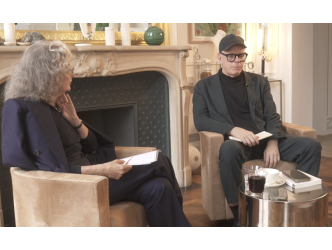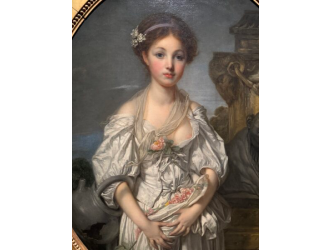Magic
There is a certain magic that exceptional artists possess — the ability to renew their vocabulary endlessly while remaining unmistakably themselves. It is not so much that they crave novelty; rather, they are in constant pursuit of a kind of unattainable perfection. Their attitude might be summed up by the famous line of the French poet Nicolas Boileau: “A hundred times on the anvil rework your piece.” As if each new painting were part of a greater body of work that must be explored again and again.
271 works
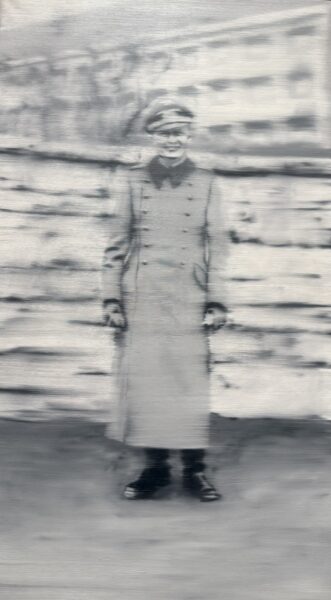
Among this blessed circle of the muses stands a German artist born in 1932 in what would become Communist East Germany: Gerhard Richter. His gift for multiplying forms is once again demonstrated at the Fondation Louis Vuitton, which is dedicating to him a vast exhibition of 271 works — the largest ever devoted to the artist. Gerhard Richter is both immensely free and immensely determined. He himself admits, in an interview, “I have a kind of immunity to ideologies and trends”(1). Richter is always where one least expects him to be.
Goethe and Nietzsche
During his last major Paris retrospective, at the Centre Pompidou in 2012 — in 2025, now of advanced age, he will no longer travel to Paris — when asked about his artistic references, he did not cite painters but two great thinkers of the German literary tradition: Goethe and Nietzsche. “That’s how I began. I had a great thirst for literature. At that time we all wanted to cultivate ourselves.” He was admitted to the Academy of Fine Arts in Dresden — “very strict, but very good,” as he put it — before crossing to the other side of the Wall to enroll at the Düsseldorf Academy in 1961.
Nicholas Serota
As Suzanne Pagé, artistic director of the Fondation Vuitton, notes, “Richter is a creator of images.” One could add that these images are the product of deep and sustained reflection. “Gerhard is a thinker. As you move through the exhibition, layer after layer, over sixty years, you sense how he conceives and practices painting,” explains Nicholas Serota, co-curator of the show and former director of Tate.
Perpetual transformation
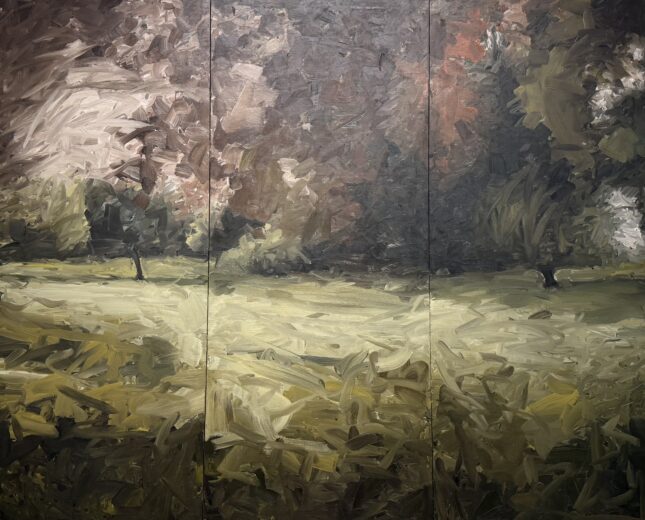
In this respect, Richter seems to have followed Goethe’s principles to the letter — the very idea of perpetual transformation that the writer formulated in his eighteenth-century Metamorphosis of Plants: “The plant passes from metamorphosis to metamorphosis.” So it is with Richter’s oeuvre — disconcerting, contradictory, complex, as befits a great artist.
An exceptional exhibition
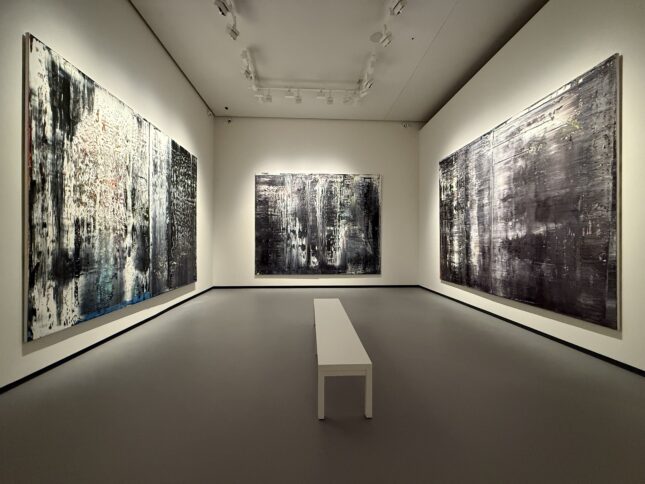
It must be said that the exhibition is absolutely exceptional. At times, the power of the sequence of images makes it deeply moving. In certain small rooms devoted to abstract works, it turns into a kind of temple of painting, reminiscent of the feeling one sometimes gets with Rothko.
Blurred figurative
Arranged chronologically, it opens with what he considers his first paintings, made in 1962. At that time he produced powerful monochrome canvases in a blurred figurative style. While his subjects are drawn from daily life — his very first painting, he has said, represents a table covered in a gray wash — he is not singing the praises of consumer society. His painted images are based on photographs, found or personal.
Family motif
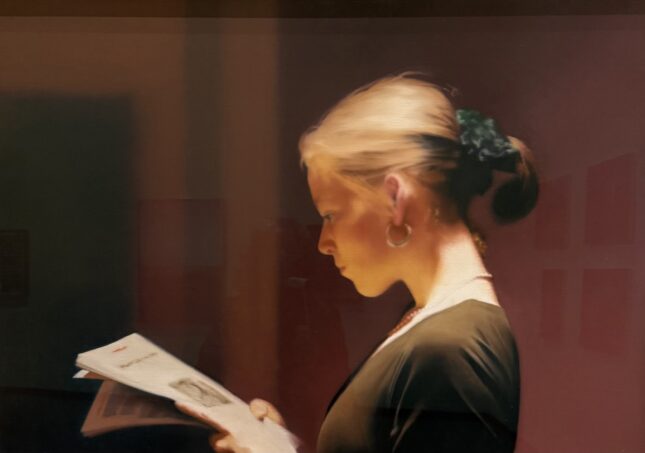
Serota describes Richter as someone who plays with ambiguity: “If you think of his early paintings — his way of blurring the image with a soft brush while the paint is still wet — it renders it almost unreal.” It is also a way of maintaining distance from the wide range of subjects he chooses. The family is one of his recurring themes, especially the mother and child — a motif he continues to explore well into the 1990s. Paradoxically, for an artist so careful to maintain detachment, this sentimental subject recalls a tradition abundantly treated by women Impressionists. Richter is well aware of the taboo he is breaking: “It’s the most natural thing in the world to paint what moves us. It’s acceptable to photograph such moments, but it’s almost forbidden to paint them.”
At the same time…
At the same time, he depicts a roll of toilet paper, a seascape, a bomber plane, or a series of eight portraits of nursing students. Gradually, Richter’s palette shifts from a near-monochrome range — like the faded photographs that inspire him — to polychrome. He is, as Boileau advised, one to “rework his piece a hundred times.” A new demonstration came in 1973, for instance, when he reproduced, in five different versions, a religious painting by Titian — an Annunciation in a Venetian church. Each time he blurred the image differently, to the point that the subject ultimately became unrecognizable. One begins to see the natural progression that leads him toward abstraction — the moment when color bursts forth.
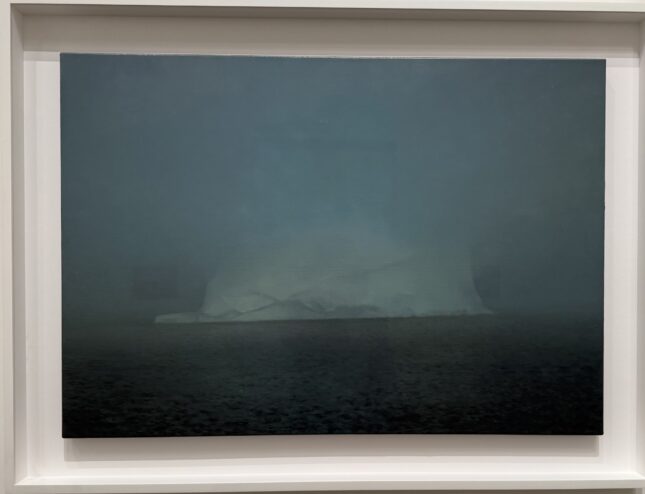
Record price
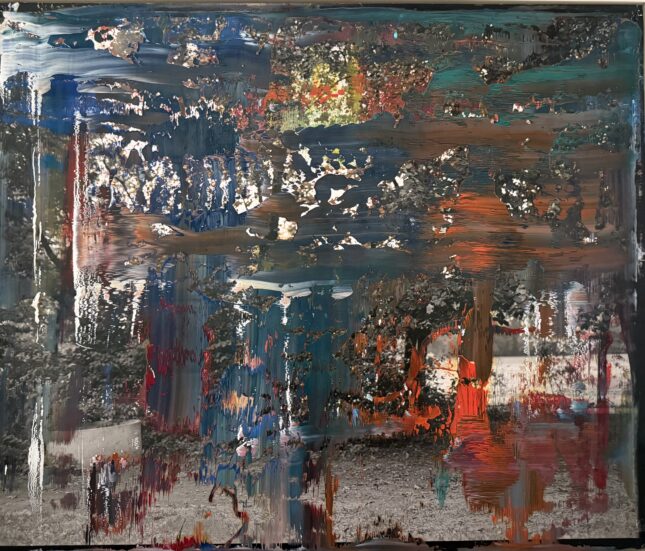
In the exhibition catalogue, art historian Michael Lüthy describes how abstraction became a form of emancipation for Richter: “He moves toward a free gesture, in direct contact with the canvas — a gesture which, once mastered, becomes the foundation of an overflowing pictorial production that will not only dominate his later work but also be exalted by the art market.” Indeed, in 2015 one of his large abstract canvases fetched the staggering sum of 40.8 million euros — a record for the artist.
Subjects too terrible
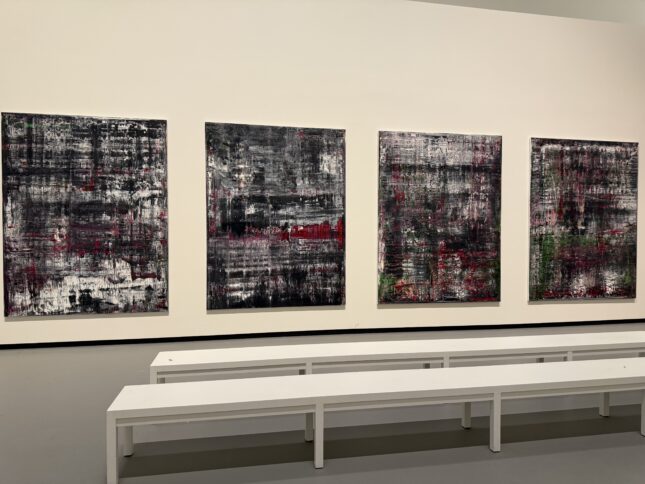
Yet it would be far too simple to reduce his production to a single abstract mode. In fact, he practices several types of abstraction, all unmistakably his. Some arise from figurative images that he effaces out of dissatisfaction. Among these are gestures he deems awkward, as well as subjects too terrible to represent — a concentration camp, or the airplane striking one of the Twin Towers on September 11. Then there are the dynamic abstractions: waves of color, accumulations of broad, impetuous strokes and erasures, applied with the famous squeegee that spans the width of the canvas. The result is a flux of multicolored movement, a choreography of light that always seems to reappear after the storm of the painter’s fury.
Figurative again
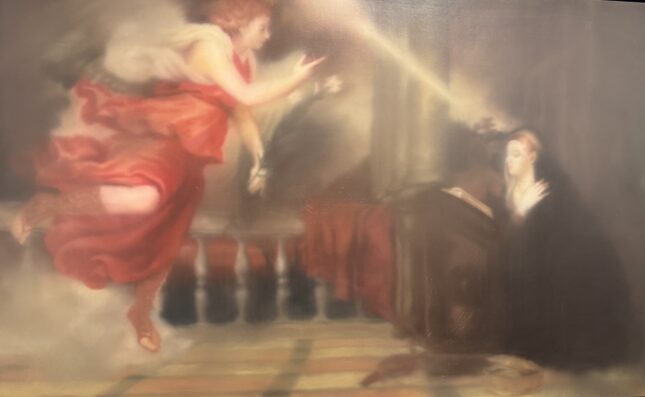
Still, it would again be too simple to think that Richter confines himself to these various forms of abstraction. He also interrupts them with figurative paintings — polychrome images derived from photographs, such as his celebrated series of candles. Between 1983 and 1989 he produced twenty-eight different representations of this motif.
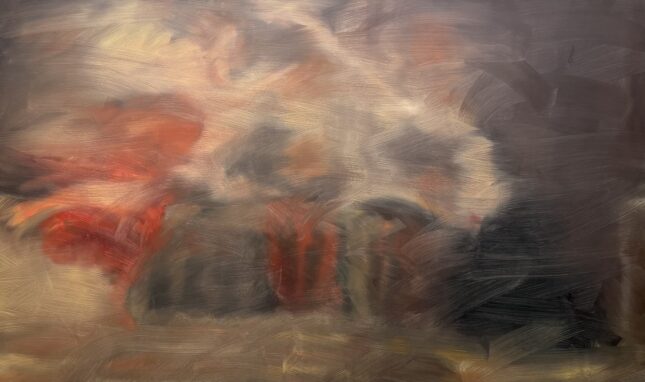
Duchamp
At times he installs mirrors, reflective steel spheres, or glass panes in his exhibitions, playing with reflections, spatial disruptions, and the Duchampian notion of the ready-made.
Technology
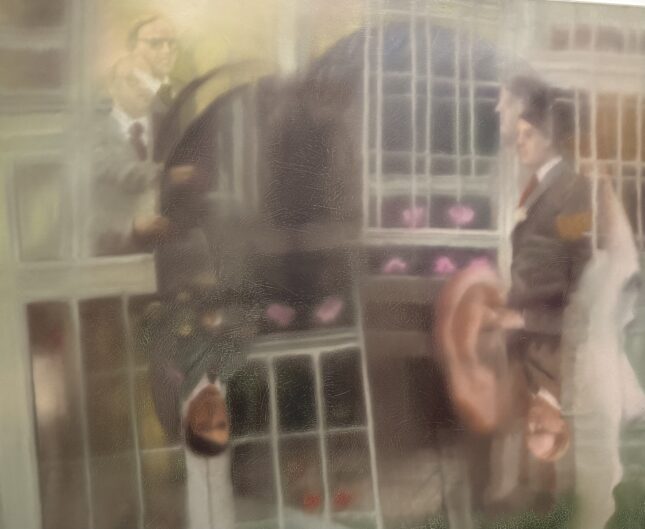
Richter even explores the use of technology that has transformed the very realm of the image. In 2002 he was commissioned to design the stained-glass windows of Cologne Cathedral, the city where he lives. He based the composition on color charts used by paint manufacturers, creating through a computer program a design of 11,263 squares, each 9.6 by 9.6 centimeters, in seventy-two hues. In 2004 he again turned away from painting to produce a multicolored print nearly ten meters long.
His meticulously organized catalogue raisonné — freely accessible online in several languages — shows that his painted production stops in 2017. Since then, according to the exhibition’s curators, the artist still goes to his studio every day, but he no longer paints. He draws. The final section of the exhibition is devoted to these lesser-known works on paper — to be discovered anew. Until he takes up painting again?
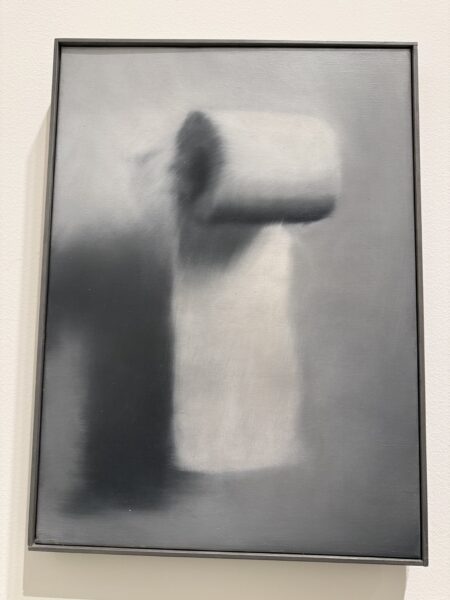
(1) The Gerhard Richter Interviews, Gerhard Richter and Hans Ulrich Obrist, Editions du Seuil.
Fondation Louis Vuitton, from October 17 to March 2.
Support independent news on art.
Your contribution : Make a monthly commitment to support JB Reports or a one-off contribution as and when you feel like it. Choose the option that suits you best.
Need to cancel a recurring donation? Please go here.
The donation is considered to be a subscription for a fee set by the donor and for a duration also set by the donor.


